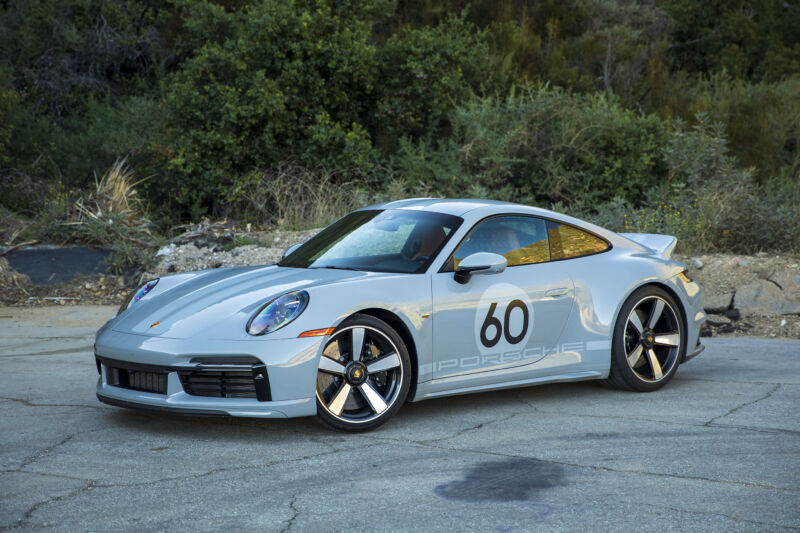Sports cars have always been emotionally driven purchases, and perhaps no automaker understands this better than Porsche. There are more than two dozen iterations of the 911 on sale today, and while it can sometimes feel like sussing out the differences in character between one variant and another is an exercise in splitting hairs, the new Sport Classic tugs at enthusiasts’ heartstrings in a way that no other modern 911 can.
Part of the Heritage Design Edition series, which includes a 911 Targa as well as two more as-yet-unnamed models, the new Sport Classic leverages the formidable capability of the latest 911 Turbo while delivering a genuinely unique driving experience and a distinct sense of style.
While its purposeful stance comes courtesy of the Turbo’s widened body, elements like the bespoke carbon fiber hood, the Carrera GT-inspired carbon “double bubble” roof, and the eye-catching carbon fiber ducktail rear spoiler—the latter of which pays homage to the iconic 911 Carrera RS 2.7 of the early 1970s—help to provide the Sport Classic with a look all its own. The bodywork is also further differentiated from its Turbo sibling thanks to the deletion of the side intakes, a change that necessitated new tooling to stamp the unique panels that run from underneath the front of the doors all the way to the rear bumper. New inlets installed under the ducktail spoiler are on hand to channel air into the engine’s intake system.

Fuchs-style five-spoke centerlock wheels further enhance the throwback vibe, and the Sport Classic also scores a Porsche Heritage badge on the intake grille that references the badge that was awarded to Porsche 356 owners back in the 1950s when a vehicle reached the 100,000-kilometer mark. Our tester’s Sport Grey Metallic paint is exclusive to the model, too, and serves as a nod to the Fashion Grey hue that was originally offered on the 356. Would-be owners can specify any number between 1 and 99 at no additional cost for the Sport Classic’s motorsport-style side graphic, but Porsche is also quick to point out that the livery is composed of decals rather than being painted on, allowing for easy removal if buyers prefer a more low-key look.
Designers paid similar attention to the 911 Sport Classic’s interior treatment, outfitting the seat centers and door panels with Pepita cloth upholstery that recalls the cabins of 911s from the ’60s and early ’70s, while ultra-supple semi-aniline leather upholstery now sees its first use outside of the 918 Spyder hypercar. White and green accents adorn the tachometer and clock, while dark Paldao wood trim comes standard on every Sport Classic, as does a serialized badge on the passenger side of the dashboard above the glovebox that denotes each example’s place in the model’s 1,250-unit production run.
While Porsche has put significant effort into the Sport Classic’s aesthetic, the biggest changes are beneath the skin. Like the bodywork, the Sport Classic’s powertrain is based on the 911 Turbo, but unlike the Turbo, the Sport Classic is rear-wheel-drive rather than all-wheel-drive. And whereas the Turbo is offered exclusively with an eight-speed PDK automatic, the Sport Classic instead opts for a seven-speed manual transmission, making this the most powerful manually shifted 911 that you can buy today.
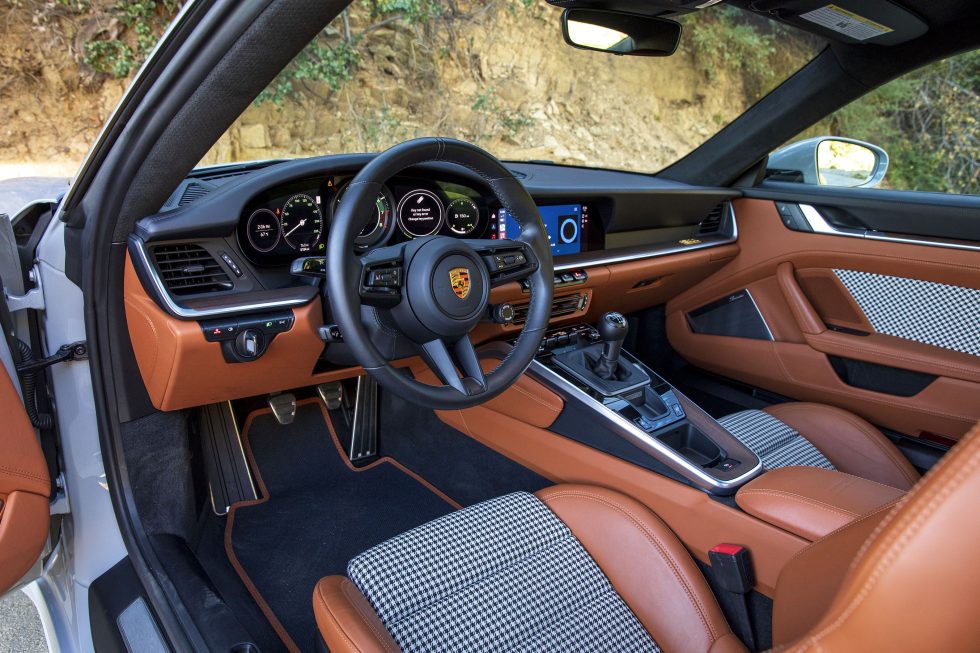
The powertrain revamp does come with a caveat, though: Due to the limitations of the seven-speed gearbox, the 3.7 L twin-turbocharged flat-six has been dialed back from 572 hp (427 kW) and 553 lb-ft (750 Nm) of torque in the Turbo to 543 hp (405 kW) and 442 lb-ft (600 Nm) in the Sport Classic. However, the 3,468-lb (1,573 kg) Sport Classic is nearly 200 lbs (90 kg) lighter due to the removal of the all-wheel drive system, so it actually boasts a slightly better power-to-weight ratio. The powertrain is bolstered by a raft of chassis upgrades, too; rear-axle steering, adaptive dampers, and active anti-roll bars borrowed from the Turbo S are all standard equipment here.
In practice, it translates to a 911 that trades performance statistics for driver involvement. Although the Sport Classic’s 3.9-second 0–60 time is more than a second behind the Turbo’s—and very conservative by our estimate—we never noticed the deficit out on the winding tarmac of the Angeles National Forest.
The seven-speed has been criticized for its notoriously long gearing in models like the Carrera S and GTS, but it seems better suited to the 3.7 L engine’s power delivery. Although seventh gear still feels largely superfluous and the shifter lacks the bolt-action tactility of the six-speed boxes used in models like the 911 GT3 and Cayman GT4, rowing through the gears in the Sport Classic is an absolute riot thanks in part to the fact that the peak torque figure is achieved at just 2,000 RPM.
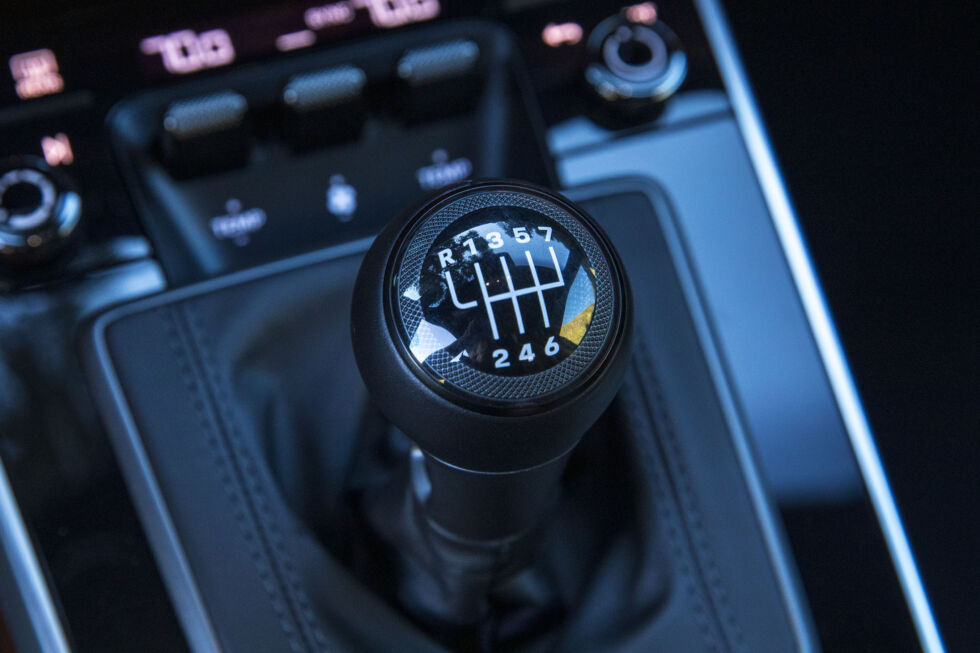
As a result, the engine pulls ferociously through the midrange and blasts out of slow corners with muscle car-like urgency. But thanks to the prodigious grip offered by the wide Pirelli P Zero NA1 tires, as well as the lighter front end, the Sport Classic feels absolutely precise when driven with purpose. One of the 911’s greatest strengths is its fantastically balanced chassis, and that’s on full display in the especially lively Sport Classic, which changes direction with stunning tenacity and constantly encourages you to muster the bravery to further explore its capabilities. Ceramic composite brakes are standard-issue for the Sport Classic and deliver unflappable stopping power with great pedal feel, yet they don’t suffer from overeager response at the top of the pedal when you’re just out for a cruise.
And that leads us to the Sport Classic’s other party trick: real-world usability. Diehards will tell you that a 911 GT3 can be a daily driver, but the reality is that the stiff suspension, lack of sound deadening, and the track-ready tires’ tendency to tramline in grooves in the road ultimately equate to something that feels more like a road-capable track car than a track-capable road car. That may be ideal for some, but those who expect to spend a significant amount of time in their 911 may be pleased to hear that the Sport Classic shifts the pendulum in the other direction.
While the aforementioned Porsche Dynamic Chassis Control and Porsche Active Suspension Management systems are on hand to keep the car planted during sprinted stints in the canyons, the Sport Classic has been outfitted with softer front springs versus the Turbo to compensate for the lack of all-wheel drive hardware up front. Around town and out on the highway, it contributes to ride quality that isn’t abusive despite the considerable performance on tap. Its Turbo lineage also ushers in the opportunity to outfit it with creature comforts like an audiophile-caliber Burmester stereo, making this a compelling alternative for those seeking GT3 levels of speed and involvement without the compromises that come with its track-tuned focus.
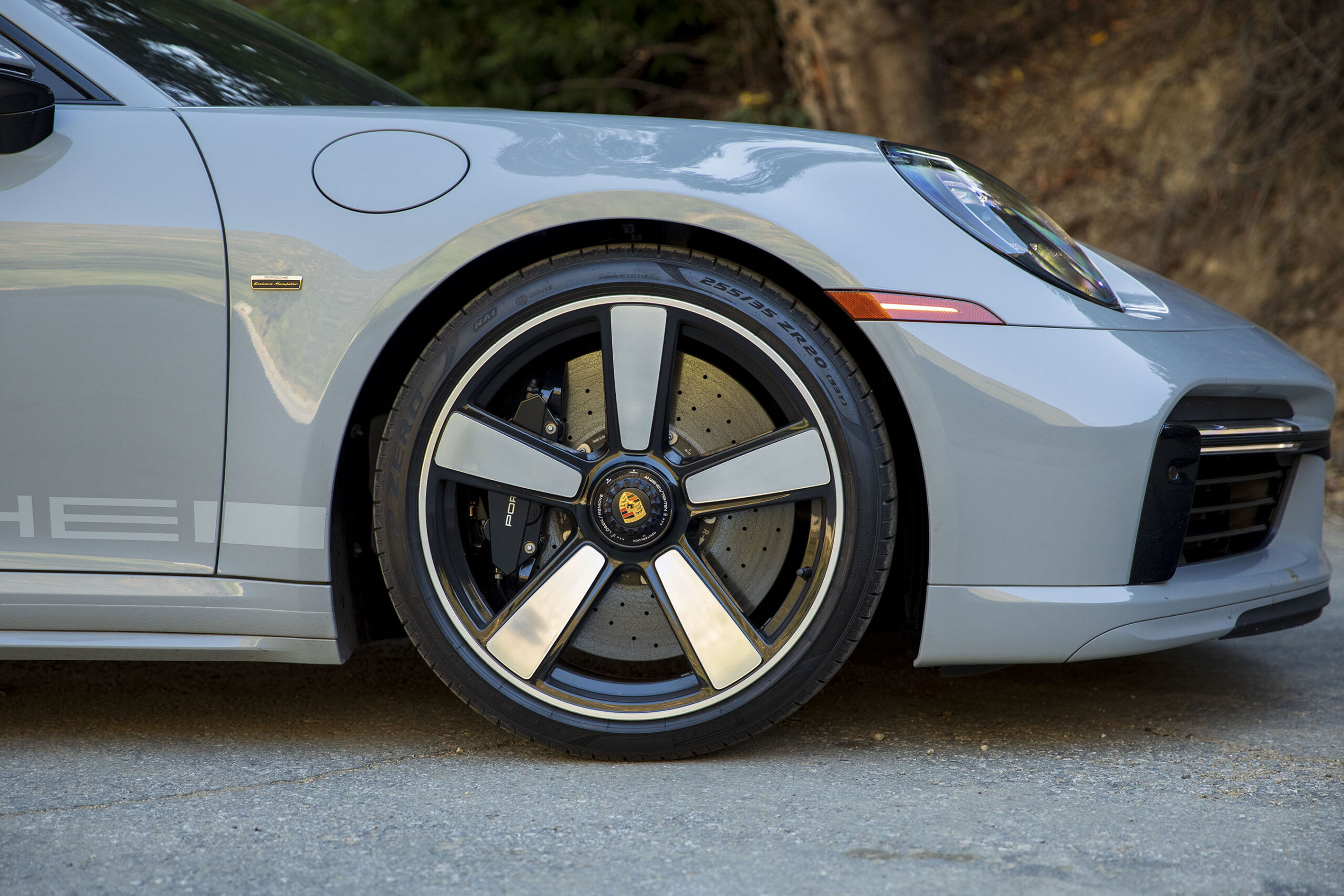
The Sport Classic’s wheels resemble the iconic 911 alloy wheels made by Fuchs in the 1960s and ’70s.Bradley Iger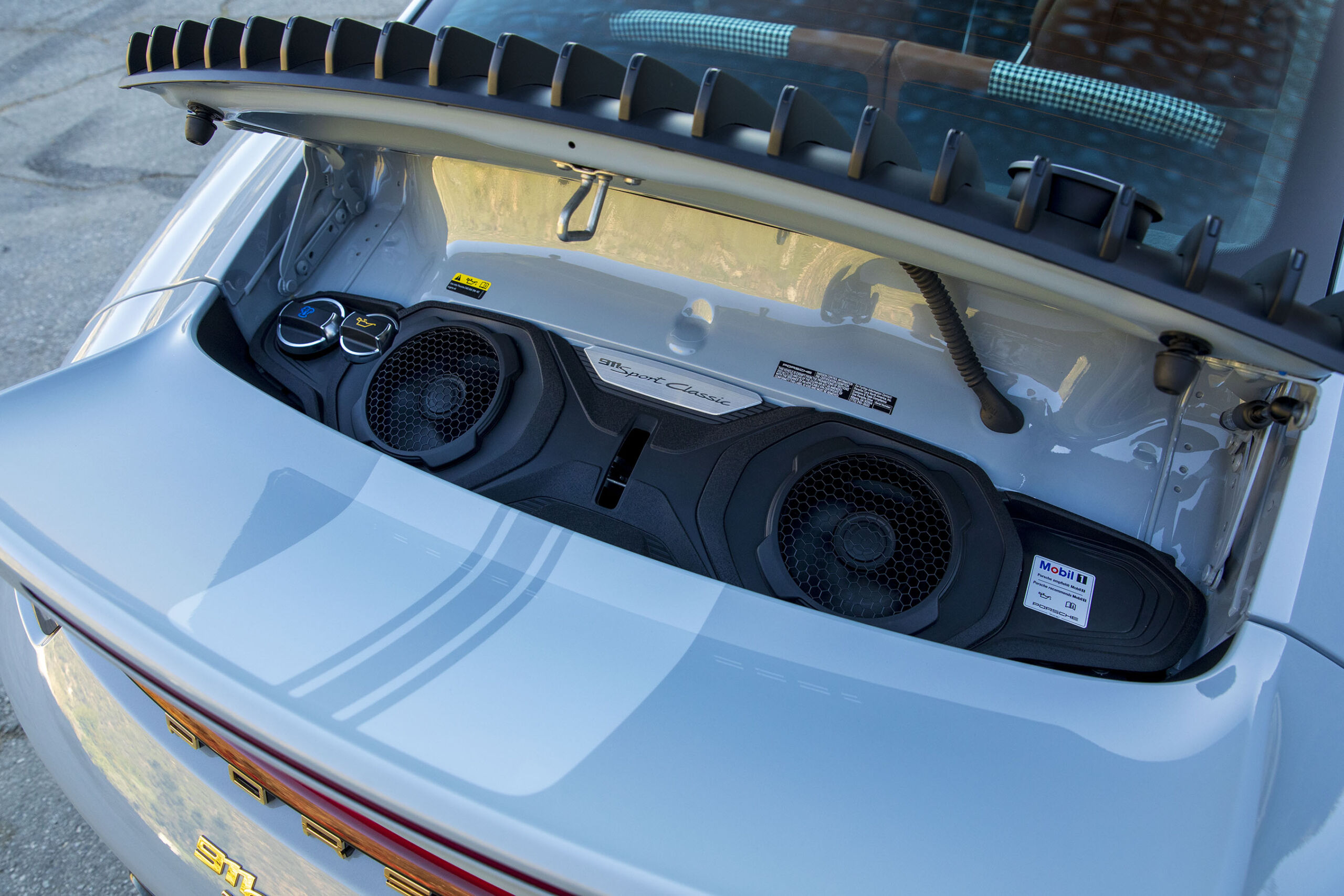
This looks more like a stereo than an engine bay, and that’s a shame, Porsche.Bradley Iger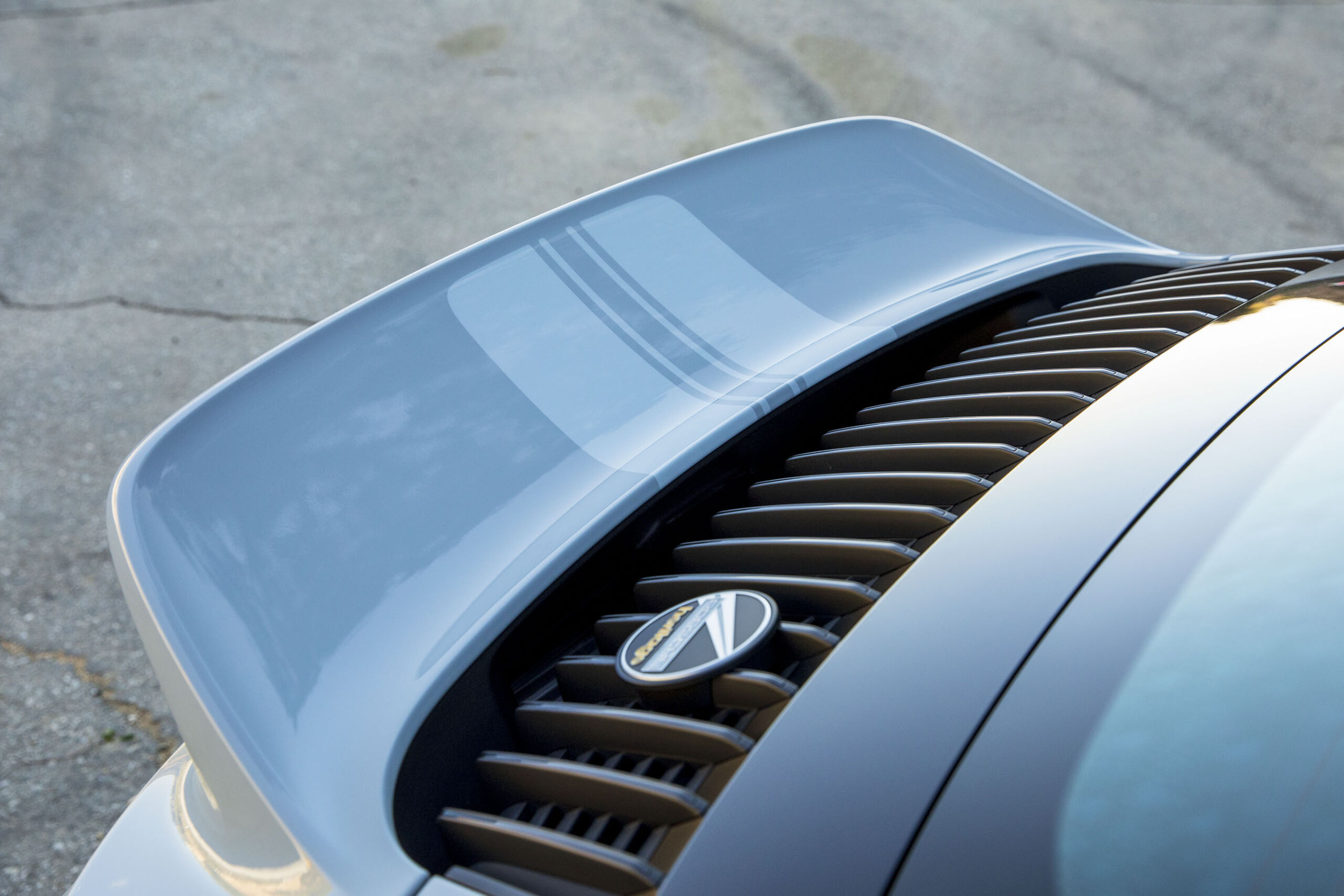
The Sport Classic has a lot of little Porsche Heritage details, like the badge on the engine grille.Bradley Iger
The current-generation 911 (992 in Porsche-speak) will probably be the last to use an analog dial as a tachometer.Bradley Iger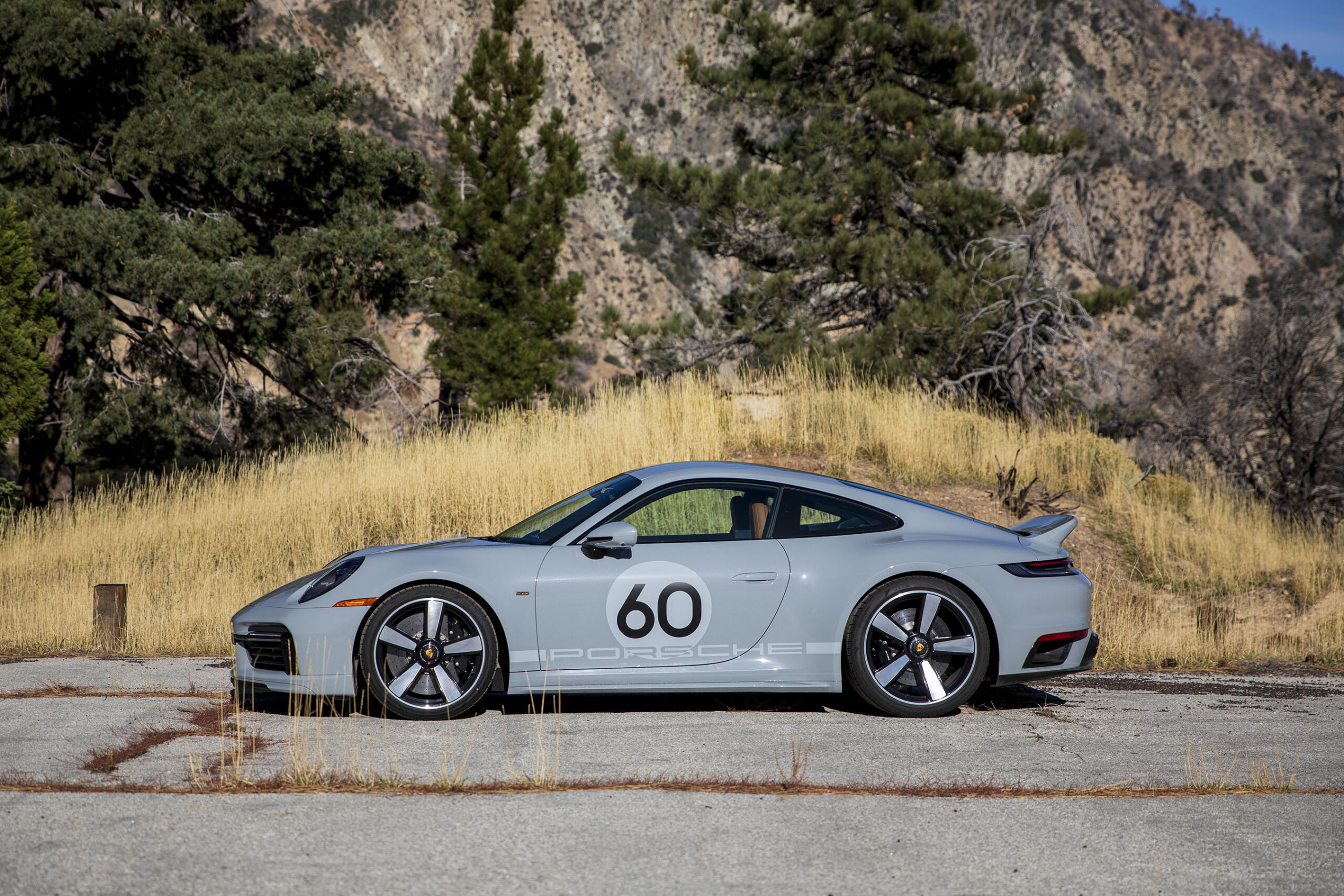
Depending on how much of a Porsche nerd you are, you might remember that the company made a 911 Sport Classic back in 2010. It was highly sought after at the time, and this new one will be no exception.Bradley Iger
This winning combination doesn’t come cheap, though, and in true Porsche tradition, you’ll need to pay more to get less. While it has fewer driven wheels and is down 29 hp (22 kW) in comparison to the 911 Turbo, the Sport Classic starts at an eye-watering $272,300, a premium of more than $75,000 over the Turbo. That makes the Sport Classic pricier than both the GT3 RS and Dakar models and the second-most expensive 911 available today (the recently announced 911 S/T commands an asking price of $290,000).
For the vast majority of us, that relegates this 911 to the realm of fantasy. But for an enthusiast with the means who’s willing to set the numbers aside and simply follow their heart, the Sport Classic might just be the ideal 911.
